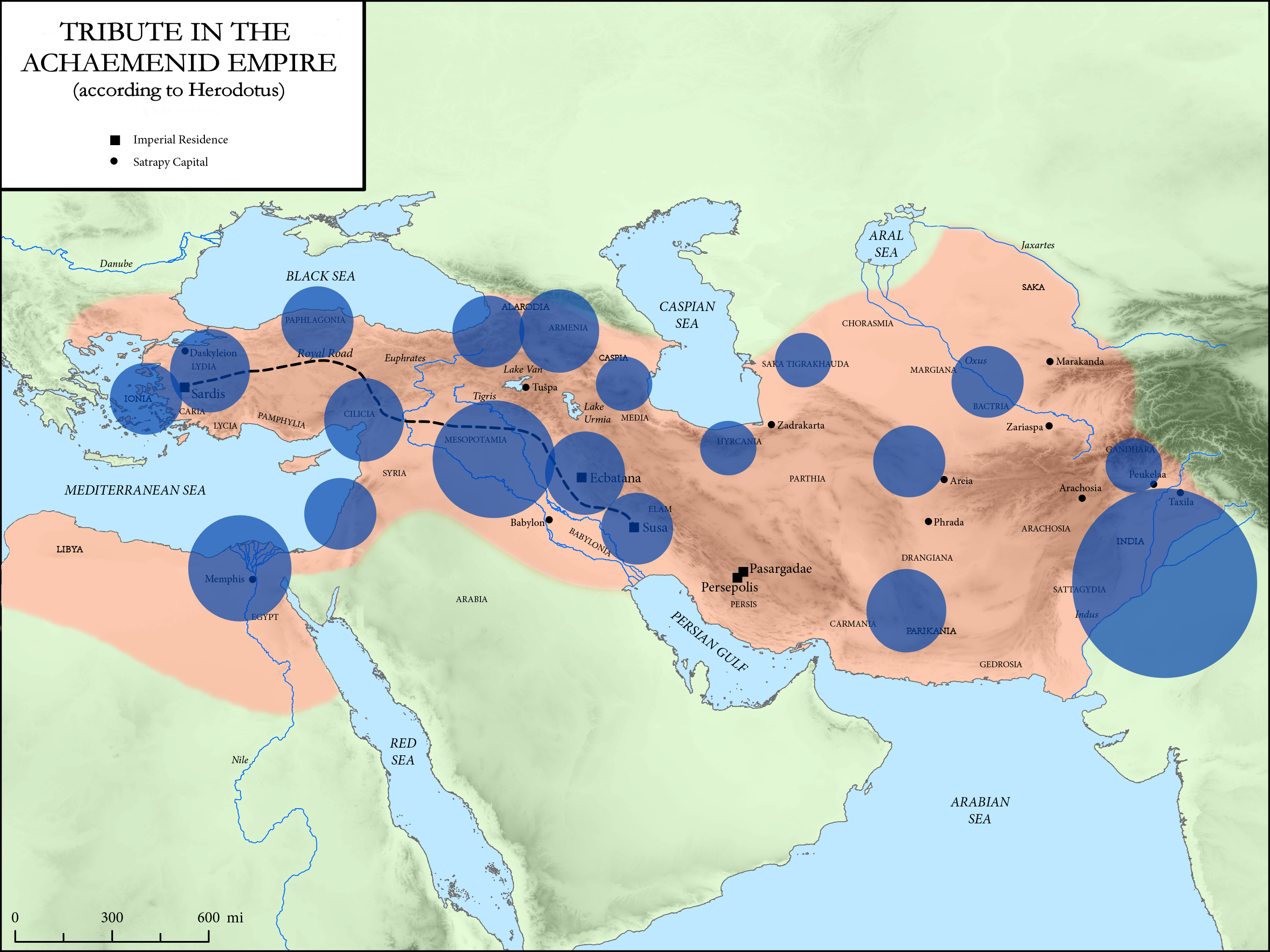Districts Of The Achaemenid Empire on:
[Wikipedia]
[Google]
[Amazon]

Darius: List of Satrapies
{{Achaemenid Provinces Herodotus

Herodotus
Herodotus ( ; grc, , }; BC) was an ancient Greek historian and geographer from the Greek city of Halicarnassus, part of the Persian Empire (now Bodrum, Turkey) and a later citizen of Thurii in modern Calabria ( Italy). He is known for ...
divided the Achaemenid Empire
The Achaemenid Empire or Achaemenian Empire (; peo, 𐎧𐏁𐏂, , ), also called the First Persian Empire, was an ancient Iranian empire founded by Cyrus the Great in 550 BC. Based in Western Asia, it was contemporarily the largest em ...
into 20 districts for the purpose of tribute payments. The following is a description of the ethnic makeup of the districts and the amount they paid in taxes, translated from Herodotus' ''Histories
Histories or, in Latin, Historiae may refer to:
* the plural of history
* ''Histories'' (Herodotus), by Herodotus
* ''The Histories'', by Timaeus
* ''The Histories'' (Polybius), by Polybius
* ''Histories'' by Gaius Sallustius Crispus (Sallust), ...
''.
Accounting units
The quantities of silver are given in Babyloniantalent
Talent has two principal meanings:
* Talent (measurement), an ancient unit of mass and value
* Talent (skill), a group of aptitudes useful for some activities; talents may refer to aptitudes themselves or to possessors of those talents
Talent ma ...
(1 Babylonian talent = about 30.3 kg), while the quantities of gold (India only) are given in Euboïc/Euboean talent (1 Euboïc talent = about 26 kg). Only the Hindush paid in gold, the exchange rate of gold to silver being 1 to 13 by weight at the time of Herodotus.
Tax districts
The order of the districts given here follows Herodotus, ''Histories'', III.90–94. In hellenocentric way it starts with Ionia and Mysia. The official Persian order of the provinces, as devised underDarius I
Darius I ( peo, 𐎭𐎠𐎼𐎹𐎺𐎢𐏁 ; grc-gre, Δαρεῖος ; – 486 BCE), commonly known as Darius the Great, was a Persian ruler who served as the third King of Kings of the Achaemenid Empire, reigning from 522 BCE until his ...
in 518 BCE, was different and started from the Empire's capital: 1. Media, 2. Susa, etc.Hermann Bengtson, Vladimir Milojčić (ed.), ''Grosser Historischer Weltatlas'', Erster Teil: Vorgeschichte und Altertum (München, Bayerischer Schulbuch-Verlag, 4th ed., 1963), p. 11, Map (b), "Reich der Meder und Perser". For comparison, it is given in the rightmost column.
See also
*Achaemenid conquest of the Indus Valley
The Achaemenid conquest of the Indus Valley occurred from the 6th to 4th centuries BCE, and saw the Persian Achaemenid Empire take control of regions in the northwestern Indian subcontinent that predominantly comprise the territory of modern-da ...
* Achaemenid Empire
The Achaemenid Empire or Achaemenian Empire (; peo, 𐎧𐏁𐏂, , ), also called the First Persian Empire, was an ancient Iranian empire founded by Cyrus the Great in 550 BC. Based in Western Asia, it was contemporarily the largest em ...
* Satrap
A satrap () was a governor of the provinces of the ancient Median and Achaemenid Empires and in several of their successors, such as in the Sasanian Empire and the Hellenistic empires.
The satrap served as viceroy to the king, though with cons ...
ies
Citations
General references
Darius: List of Satrapies
{{Achaemenid Provinces Herodotus